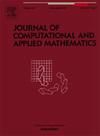Reducing overfitting in ResNet with Adaptive Lipschitz regularization
IF 2.1
2区 数学
Q1 MATHEMATICS, APPLIED
Journal of Computational and Applied Mathematics
Pub Date : 2025-05-21
DOI:10.1016/j.cam.2025.116747
引用次数: 0
Abstract
This paper introduces Adaptive Lipschitz Bound Regularization with Random Constraints (LBA Regularization), a method designed to mitigate overfitting in residual neural networks by dynamically adjusting the regularization parameter based on the spectral norm of randomly selected layers. Unlike traditional regularization techniques such as L1, L2, Dropout, Early Stopping, and Batch Normalization, LBA leverages an adaptive approach that effectively constrains the Lipschitz bound while maintaining flexibility in deep learning architectures. To substantiate this method, an analysis of the Lipschitz properties in ResNet architectures was performed, offering theoretical insights into their impact on model stability and generalization. The method was evaluated in various neural architectures and datasets, including MNIST, CIFAR-10, and tabular data sets. The results demonstrate that LBA significantly reduces the gap between training and validation accuracy, leading to improved generalization performance. Furthermore, an adversarial robustness analysis against FGSM and PGD attacks confirmed that LBA maintains model stability under adversarial perturbations.
基于自适应Lipschitz正则化的ResNet过拟合算法
本文介绍了随机约束下的自适应Lipschitz界正则化(LBA Regularization)方法,该方法基于随机选择的层的谱范数,通过动态调整正则化参数来缓解残差神经网络中的过拟合问题。与传统的正则化技术(如L1、L2、Dropout、Early stop和Batch Normalization)不同,LBA利用了一种自适应方法,有效地约束了Lipschitz边界,同时保持了深度学习架构的灵活性。为了证实这一方法,对ResNet架构中的Lipschitz属性进行了分析,为它们对模型稳定性和泛化的影响提供了理论见解。该方法在各种神经结构和数据集(包括MNIST、CIFAR-10和表格数据集)中进行了评估。结果表明,LBA显著减小了训练精度和验证精度之间的差距,从而提高了泛化性能。此外,针对FGSM和PGD攻击的对抗性鲁棒性分析证实了LBA在对抗性扰动下保持模型稳定性。
本文章由计算机程序翻译,如有差异,请以英文原文为准。
求助全文
约1分钟内获得全文
求助全文
来源期刊
CiteScore
5.40
自引率
4.20%
发文量
437
审稿时长
3.0 months
期刊介绍:
The Journal of Computational and Applied Mathematics publishes original papers of high scientific value in all areas of computational and applied mathematics. The main interest of the Journal is in papers that describe and analyze new computational techniques for solving scientific or engineering problems. Also the improved analysis, including the effectiveness and applicability, of existing methods and algorithms is of importance. The computational efficiency (e.g. the convergence, stability, accuracy, ...) should be proved and illustrated by nontrivial numerical examples. Papers describing only variants of existing methods, without adding significant new computational properties are not of interest.
The audience consists of: applied mathematicians, numerical analysts, computational scientists and engineers.

 求助内容:
求助内容: 应助结果提醒方式:
应助结果提醒方式:


